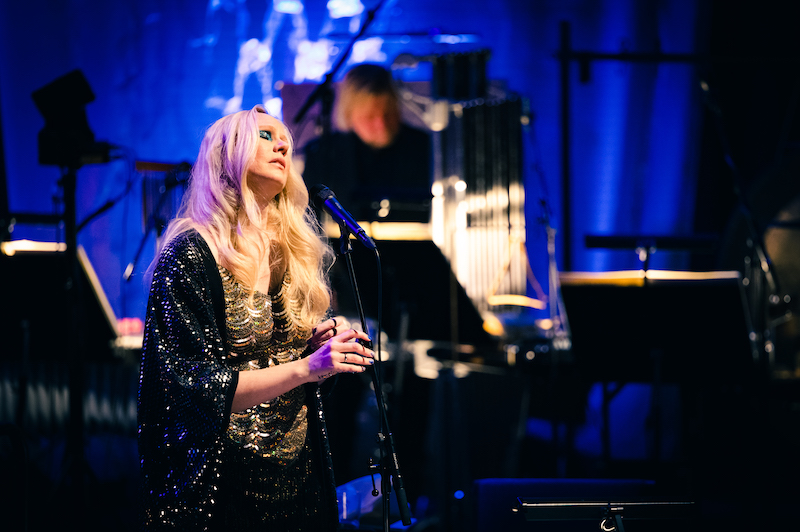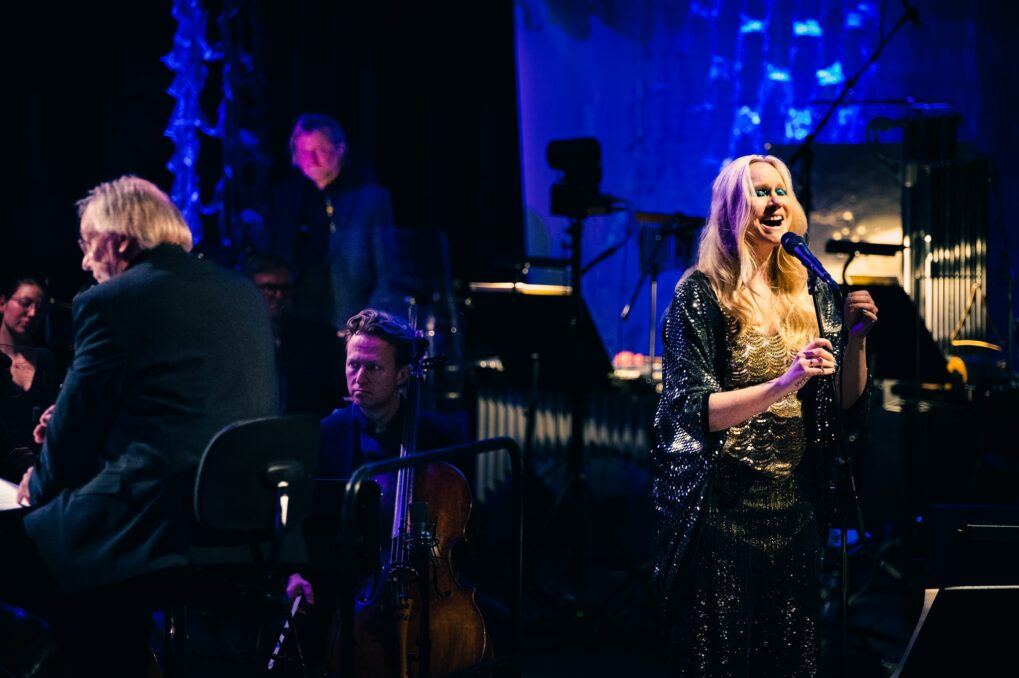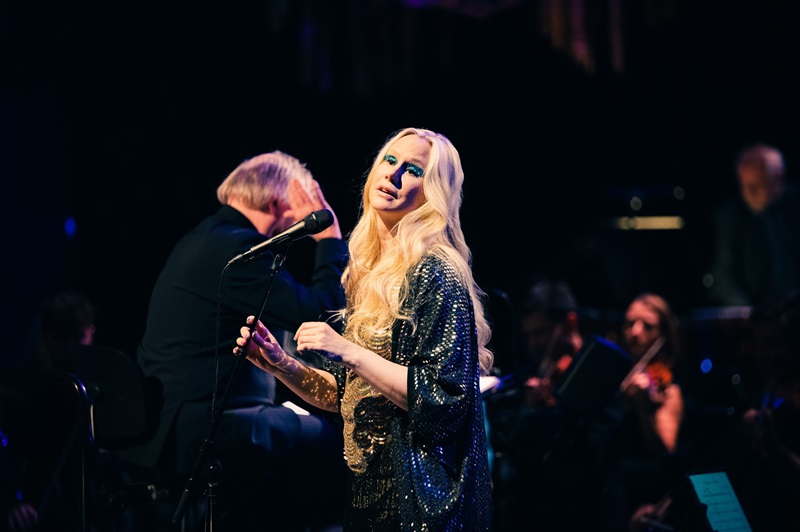The chameleonic artist Susanna is back with her new musical chapter dedicated to the French poet Charles Baudelaire. Indeed, her new full-length aptly named “Baudelaire & Orchestra” features some reworked songs from her past installments “Baudelaire & Piano” and “Elevation”. As the artist explained in our chat, the LP sees the collaboration of the NRK (Norwegian Radio Orchestra). Check out our interview to learn more about it.

Hi Susanna, welcome back to Femme Metal Webzine. How are you?
Thank you so much. I’m good. Since I like the summer, I’m trying to enjoy it even though I have a new album coming up. So, there’s still so much work to do.
About it, what can you tell me about the production of “Baudelaire & Orchestra”?
It is the third album in which Baudelaire‘s “Les Fleurs du Mal” is present. I became so fascinated with his poetry that I chose some selected poems to be accompanied by my music. I started with the solo release “Baudelaire & Piano” in 2020. It was a sparse, naked, and stripped-down album. But already then, my goal was to create some orchestral arrangements for these songs because Baudelaire’s imagery and poetry deserve richer musical arrangements. Due to their complexity and requested time, I began with them a while ago.
The involvement of the NRK Orchestra in Susanna new album
I understand. Due to since the involvement in the recordings of the NRK Radio Orchestra (Norwegian National Radio Orchestra). How was the collaboration born? And considering the gigantic amount of work behind it, how does everything evolve? What sort of obstacles do you have to face?
At first, when I had this idea to involve an orchestra, my sole goal was to play with the NRK Orchestra because they are amazing and musically versatile. So, I contacted them to understand if they were willing to collaborate on this project. And yes, they were interested in it. However, it’s a long process because there’s the involvement of several parts. For example, there are a lot of decisions that the broadcast company has to make. Also, behind this Susanna project, there’s a lot of planning.
Since the orchestra has a busy schedule, it’s thoughtful planning, years ahead. Unfortunately, the pandemic came, and subsequently the whole process has been delayed. It was been massive to work for many years on the same project but at the same time funny and interesting. For example, I collaborated with two different composers for the orchestral arrangements. Also, it has been challenging to collect the funds to successfully achieve and conclude the project.

Susanna “Elevation”, and “Baudelaire & Piano”
I know that “Baudelaire & Orchestra” shares a main thread with some of your old albums such as “Elevation”, and “Baudelaire & Piano”. Given these two full-lengths, how “Baudelaire & Orchestra” has enriched you as an artist? About the previous question, in which way do these three Susanna releases share a connection?
As I mentioned before, everything started with my acoustic release “Baudelaire & Piano”. And the same time, I began to work for a concert performance for a performing center arts by including scenography and videos. And also videotapes made by Stina Stjern which were integrated with my piano and vocals. Our collaboration continued with “Elevation” together with the French recitation performed by the artist Delphine Dora. What in the beginning began as a solo adventure and then evolved into a homogeneous work between the three of us.
Then, it comes “Baudelaire & Orchestra” which features orchestral re-arrangements of some songs from both “Baudelaire & Piano” and “Elevation”. The songs in a certain manner have traveled with me through different settings and instrumentations. Naturally, the orchestral instrumentation offers the chance to experiment with the music and with different musical layers. However, this time we have removed the piano arrangements, and to some extent, we have replaced them with the harp.
The involvement of Stina Stjern and Anita Kaasbøll
On this album, you have collaborated with a lot of artists, but there were two that have completely captured my attention: Stina Stjern and Anita Kaasbøll. How did these two artists come into the picture? And, how you have appropriately shared the parts between the two?
It mostly correlated to the fact that the musical parts in the orchestra were envisioned. So, I wanted to have both musical and sung parts in a perfect equilibrium. To achieve this, I needed some additional singers. First, Anita Kaasbøll is an experienced and versatile vocalist. She sings in the rock band Bladed and she sings in an experimental vocal group called Trondheim Voices.
Besides that, she’s also a singing teacher. She was the first person that I thought of for this project. Then, there is Stina Stjern who besides being the visual creator of her videotapes for this project, she’s also an excellent singer. It felt natural to ask her to join me and Anita.
About the vocal parts, I had a few ideas from the beginning on how to develop and share them. We both sing together but also, but Stina and Anita are involved in some additional vocal harmonies. We have all worked together to find the right melodies.
The future
The singles “Obsession” and “Vampire” are some appetizers from “Baudelaire & Orchestra”. Hypothetically speaking, would you like to bring this whole opus in a live setting around Europe? Maybe with a quartet of arches?
I would love that and I’m currently working on making it happen. Since I own the full orchestra score, I could actually reach out to an orchestra and ask for a collaboration. I really hope I can manage it. But, I’m also looking into a different option such as a small ensemble. As I said before, it takes a little bit of time to correctly organize everything.
Susanna, you’re a really prolific artist. “Baudelaire & Orchestra” represents just the tip of the ice of your extensive discography. What is your next step? Are you already working on your next musical challenge?
Yes, I am. I’ve been already busy with the composition of my next full-length with my own lyrics for quite some time now. Actually, I’m recording this new material in the studio. I’m not so sure about how much it will take. But I’m so motivated to record these fresh new lyrics after dedicating so many years to the poetry of Baudelaire.
I hope you did enjoy the interview. Unfortunately, we are at the end of our chat. Thank you for your time.
Thank you so much, Miriam. You are more than welcome.
